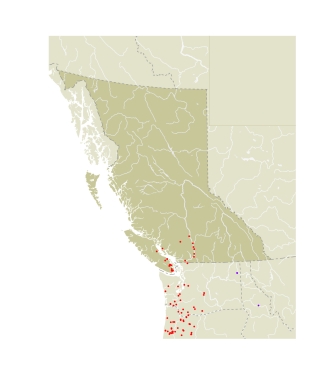AdultThe dorsal forewing of the male Dun Skipper is uniformly chocolate brown, with a black stigmal patch. At most, there is a slight tan flush around the stigma. The Dun Skipper can be confused only with the male Tawny-edged Skipper, in which the tan flush usually extends to the costal (front) edge of the forewing. The median spots on the dorsal forewing of the female Dun Skipper are very inconspicuous compared with those on the female Tawny-edged Skipper. The ranges of the two species overlap in the Chilcotin area of BC between Lillooet and Riske Creek.
Immature StagesHeitzman (1965) described the immatures of the eastern populations. The egg is green. The body of the mature larva is pale green, with overlying fine white lines. The front of the head is caramel brown with two vertical light bands. The back is black with a dorsal oval spot.
SubspeciesBC populations are the nominate subspecies, E.v. vestris; TL: Spanish Ranch Rd., Meadow Valley, Plumas Co., CA (Emmel et al. 1998a). The eastern subspecies may eventually be found in southeastern BC.
